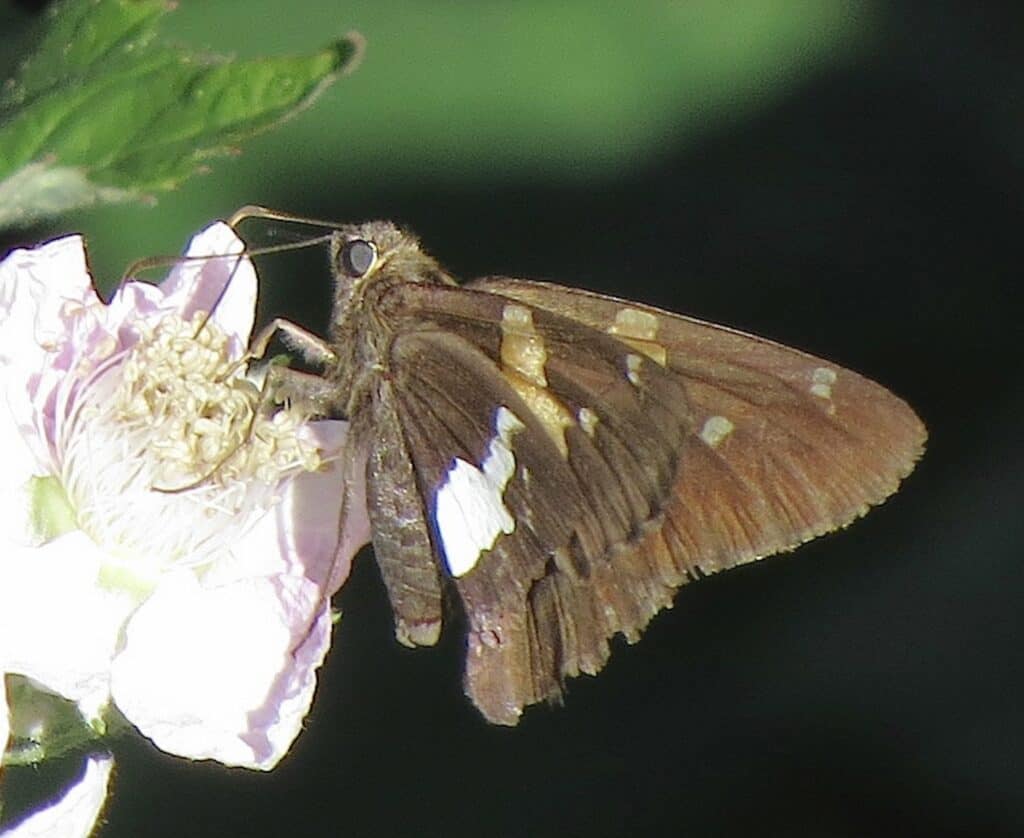Since the posting of the Cortes Island Museum’s blog Still Alive and Skipping in 2018, not a great deal of newsworthy developments can be reported. A few more sightings (by Barry Saxifrage, plus one by Richard Trueman and one by Jodi Peters) have extended the local range of the species (Espargyreus clarus) and added Lavender (Lavandula sp.) as well as Lobelia (Lobelia sp.) to the list the adult skippers feed on. Other flowers include Blackberry (Rubus sp.), Buttercup (Ranunculus sp.), Speedwell (Veronica sp.), Fringed Bleeding Heart (Dicentra eximia), Oregon Grape (Mahonia aquifolium), and Snowberry (Symphoricarpos albus).
After what seemed like a long procrastination, Crispin Guppy, the skipper expert, finally published the results of the genomic work done on the exuvial remains of a skipper that had been raised from the egg through pupation and into adulthood (see the Museum blog for details). This places our local population firmly within the subspecies californicus and makes it a member of this far-ranging group, inhabiting the Pacific coast from California through Oregon and Washington, all the way to southern BC.
Here is Guppy’s official contribution, as part of a larger report on taxonomic developments in the world of butterfly research: The Taxonomic Report (pdf).
To read more about the Silver-spotted skipper, go to the original blog Still Alive and Skipping.

2022/10/12



